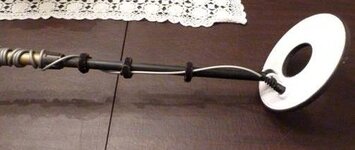RamRod
Newbie
- Jun 29, 2014
- 1
- 0
- Detector(s) used
- tesoro sand shark, garret ace 150
- Primary Interest:
- All Treasure Hunting
hows it going everyone. im new to metal detecting this is what i found so far. a few coins (pennies), a flat head V8 header gasket, and a motorcycle plate from 1987. ive been hunting on the beach with a tesoro sand shark and on dirt a garret ace 150. Any tips to increase my chances on finding something other then trash and pennies?
thanks guys
thanks guys








